In 2020, the Border Road Organisation gave the Indian motorcycle community a new adventure trail — Lipulekh Pass on Kailash Mansarovar Road.
In October 2020, I attempted a motorbike trip on this route and put my name in the history of the first few motorbikers who attempted it. No one, at that time, except for the Indian army and the locals from village Garbiyang (whose residents reportedly own land around Kalapani), had accessed the newly built Kailash Mansarovar Yatra Road and reached Lipulekh Pass. At that time, it was projected that by the end of 2023, the Kailash Mansarovar road route would be open to the general public of India.
Back to reality, three years later (in September 2023) I was reading the news on the Kailash Mansarovar Road Project, a very ambitious project by the currently-in-power BJP government with the instrumental involvement of Nitish Gadkari.
Kailash Mansarovar Road Project
The Kailash Mansarovar Road Project stands as a monumental initiative aimed at enhancing connectivity to the sacred and remote region of Kailash Mansarovar in Tibet, China. This ambitious undertaking seeks to establish a road network that facilitates easier access for pilgrims and tourists to reach the revered Kailash Mansarovar Lake and Mount Kailash, one of the holiest destinations in Hinduism, Buddhism, and Jainism.
The significance of the Kailash Mansarovar Road Project cannot be overstated. KAILASH MANSAROVAR ROAD, previously accessible only through arduous treks or long and challenging routes, will become more accessible, allowing pilgrims and travelers to embark on their spiritual journeys with greater ease and safety. This initiative also aims to boost tourism in the region, thereby fostering economic development in the local communities.
Central to the success of this project is the instrumental involvement of Nitish Gadkari, the Minister of Road Transport and Highways of India. As a key figure in India’s infrastructure development, Gadkari has played a pivotal role in advancing the project. His commitment to improving road connectivity has contributed significantly to the realization of this ambitious endeavour, emphasizing his dedication to facilitating easier access to KAILASH MANSAROVAR ROAD.
In conclusion, the Kailash Mansarovar Road Project holds immense relevance in providing improved access to the sacred region of Kailash Mansarovar. Nitish Gadkari’s involvement underscores the commitment to infrastructure development, making this initiative a crucial step towards enhancing spiritual and tourist experiences while boosting the local economy in the KAILASH MANSAROVAR ROAD region.
The same Kailash Mansarovar motorable road will then take the tourists all the way from Dharchula to Om Parvat and Adi Kailash in only 2 days.
Check out my video below (a real vlog) of my journey in 2020..
Until now, it was only possible to reach Lipulekh Pass, Adi Kailash and Om Parvat after a nearly 10-day trek from a place called Budhi. Dharchula to Budhi was a 50km or a 3-hour drive. From Budhi (about 5 km before Chiyalekh, or Chhiyalekh) it was a narrow trekking route to Om Parvat, Adi Kailash, and other places.
According to Kailash Mansarovar’s itinerary on Thrillophilia (one of the cheapest itineraries available online), it costs 30,000 Rupees and 13 days for Dharchula to Adi Kailash base camp trek (near Jolingkong) and back.
Once the Kailash Mansarovar road is open for tourists, it will take less than half the total time to reach Om Parvat, Adi Kailash and Lipulekh Pass, and a lot less budget. It will, moreover, be possible to ride on Kailash-Mansarovar Road in our own vehicle — all it will take is an Inner Line Permit from SDM in Dharchula.
Please note that as per the ongoing road development work in October 2020, the new Kailash Mansarovar road remains open for tourists for only 17 hours a week — between 7 PM Saturday to 12 PM Sunday. Rest of the days, the road is accessible only to the Indian Army and other permitted government vehicles.
So make sure you check with the SDM in-charge in Dharchula about the permitted timing.
An Unsuccessful Attempt…
In the first week of October 2020 I, along with a few other riders from Pithoragarh and Dharchula tried to access Kailash Mansarovar road up to Lipulekh Pass.
We started from Dharchula and rode all the way to Chiyalekh. At Chhiyalekh, since we did not have the Inner Line Permit (issued by SDM Dharchula) we were stopped by the ITBP and asked to return to Dharchula.
In October 2020, given Indo-China border tensions SDM Dharchula was not issuing ILP to tourists to access the route. Why? Other than China, Nepal is also objecting to this newly built Lipulekh Pass road, and this has triggered tensions in the border areas.
Lipulekh Pass Routemap: Kailash Mansarovar Road Itinerary
Despite a failed attempt, and from whatever little of this newly built motorable road by BRO (border road organisation) I explored, I can say that this route is by far the most adventurous motorcycle route. It was next level to Shinkula Pass in Zanskar and Sach Pass in Chamba, forget Spiti Valley or Manali to Leh highway.
The first 20 km (Dharchula to Tawaghat) was a mix of concrete and dirt road, and the next 35 km (Tawaghat to Budhi) was only a dirt track. The real adventure began after Budhi, which, for Chiyalekh, was in fact only 5km but took us about an hour.
From my estimate, we climbed over 500m within 5km. One hairpin bend after the next on what was nothing but a dirt track carved out of blasted mountains. “And it is just the beginning,” I was told. “The real adventure lies after Chialekh”.
It is at Lipulekh Pass, on the newly built Kailash Mansarovar Road, that India concludes its territory to Tibet (now under China).
As per rough estimates, this is how the distances on the newly built Kailash Mansarovar Yatra Road will look like…
- Dharchula to Gunji via Chialekh (72 km) [Day 1]
- Gunji to Nabhidang to Lipulekh (18+11 km) [Day 2]
It is possible to reach Dharchula to Lipulekh Pass in 2 days, given you’re driving for most of the hours of the day and don’t come across any road blockades.
For example during our ride, despite leaving from Dharchula in the morning we hardly managed to reach Chiyalekh (located 13 km before Gunji). Having said that, though it is a 2-day journey from Dharchula, for one side, take one day of buffer time with you.
Here’s a more detailed 5-day itinerary to cover a few more highlights on the Kailash Mansarovar Road…
- Day 1: Dharchula – Tawaghat – Pangla – Najang – Malpa – Budi – Chiyalekh Top (3180m) – Garbyang (3044m) – Ceti (2915m)
- Day 2: Ceti – Napalchyo – Gunji (3128m) – Kalapani Temple(3505m) – Nabidhang (4119m) – Gunji (3128m)
- Day 3: Gunji – Nabi – Kuti (3736m)
- Day 4: Kuti – Jolingkong (4295m) Gauri Kund (4493m) – Lipulekh Pass (5200m) – kuti – Nabi
- Day 5: Nabi – Gunji – Garbyang – Najang – Dharchula
If you are coming from Delhi, add two more days for Delhi to Dharchula, and back!
What Kind of Vehicle Should You Drive
If you are driving: Though I saw a few 4*2 Mahindra Boleros struggling the way, I strongly recommend a 4-wheel drive for Lipulekh Pass on Kailash Mansarovar Road. Since Indian Army trucks are common to be seen on this road, I don’t think the height of the SUV should be a problem.
Two Wheelers: As far as motorcycles are concerned, I suggest something that is quick and nimble. For me, for example, my Jawa 42 did a perfect job. Its lightweight body, powered by a 300cc and a 28 N.m @5000 rpm of torque generated enough power to easily climb uphill.
We had other motorcycles like a couple of Royal Enfield Classic 350 (that I’ve always found too bulkier and heavier for such terrains, including Ladakh and Spiti Valley), a Hero XPulse and a Royal Enfield Himalayan, and I found my Jawa 42 doing better than all of them thanks to its great power output.
Having said that, as long as your motorcycle has a great power output and is not too heavy, given its engine size, you should do good on those roads. It’s not necessary to have a big engine (a 200 or 300 cc should do fine) but for a motorcycle trip to Lipulekh Pass on Kailash Mansarovar road, your bike should have enough torque to be able to pull you through.

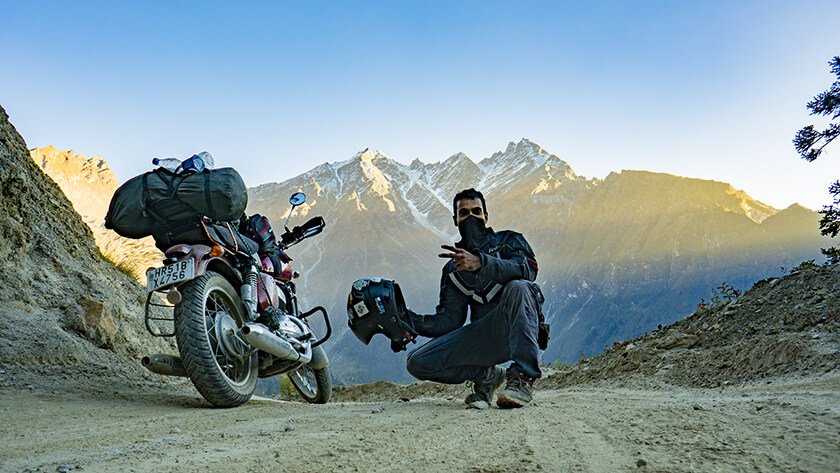
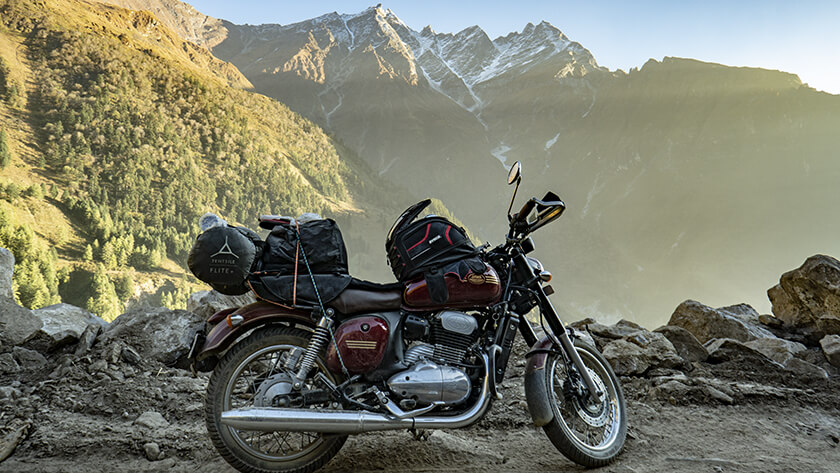
A Few more photos…
Unfortunately, since we couldn’t go anywhere beyond Chhiyalekh, I do not have any visuals (pictures of video clips) to show the route from Chiyalekh to Lipulekh Pass.
Here are a few photos from Dharchula to Chiyalekh (expect more beautiful and challenging landscapes) on the Kailash Mansarovar Road:
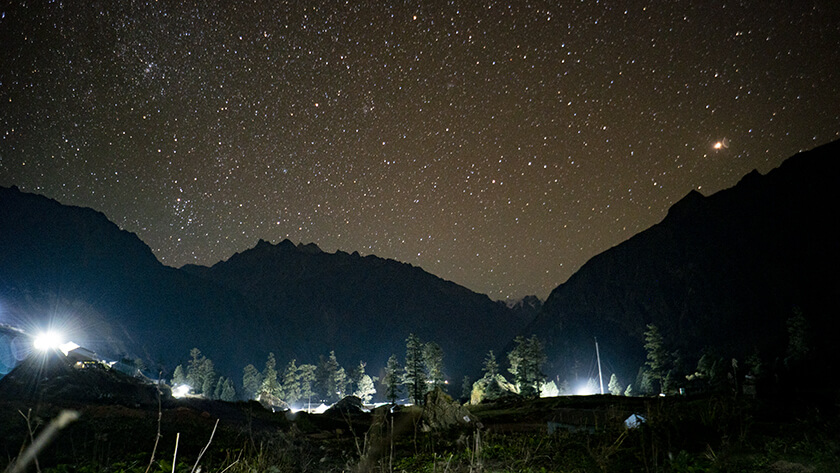

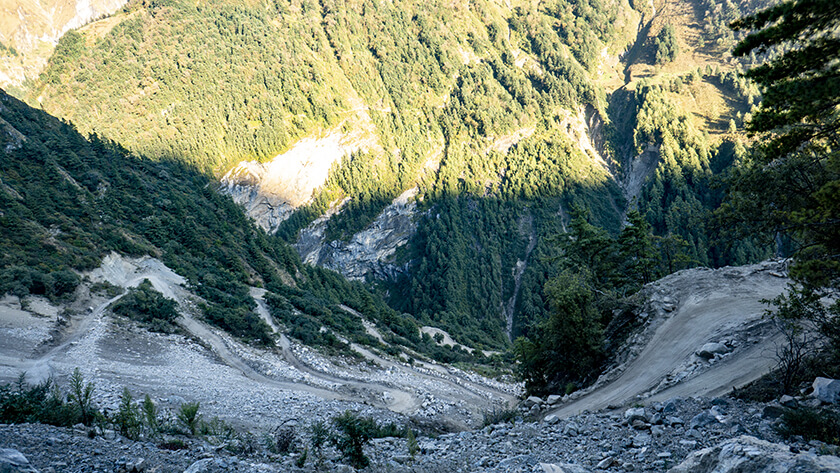
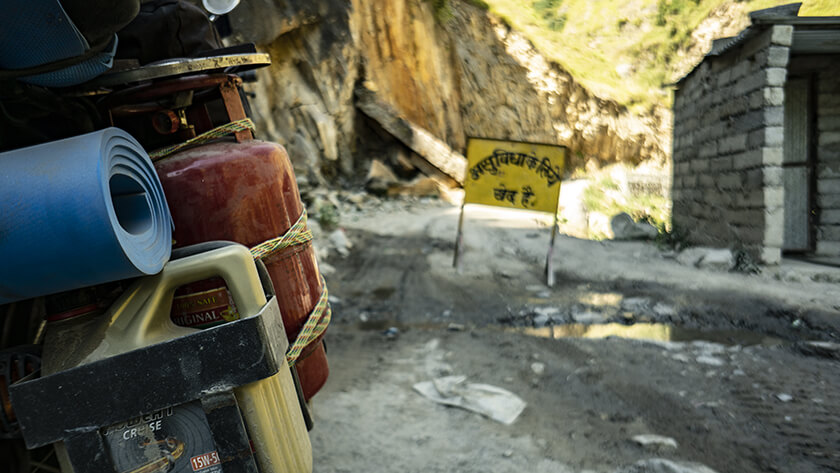
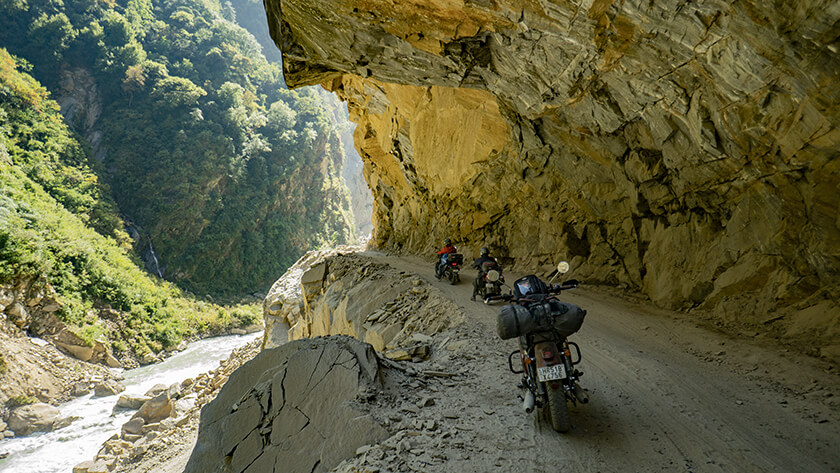
If you don’t know Mount Kailash, located in China occupied in Tibet, is of high religious significance to Hindus in India. For ages, Hindu and Buddhist pilgrims have been making an arduous journey to this place.
The Mansarovar Lake, a freshwater body fed by the Kailash Glacier, is believed to absolve all sins with a sip.
The newly-made Kailash Mansarovar Road will cut down the travel time of this arduous journey, which was, in fact, only possible on foot and horseback so far, by nearly 80 percent.
Also Read Panchachuli Base Camp Itinerary in Darma Valley (the road for Darma Valley bifurcates from Tawaghat, near Dharchula). It is possible to visit Lipulekh Pass and Darma Valley in a single visit to Dharchula.
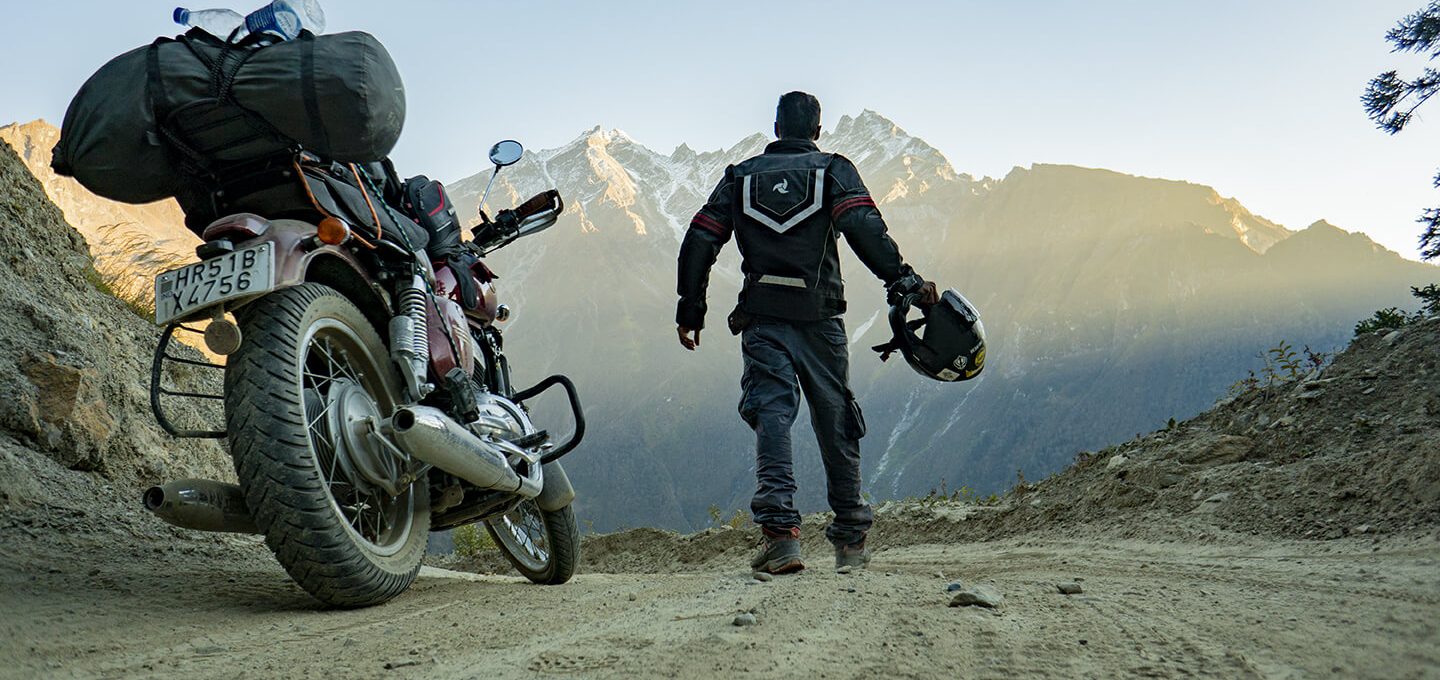
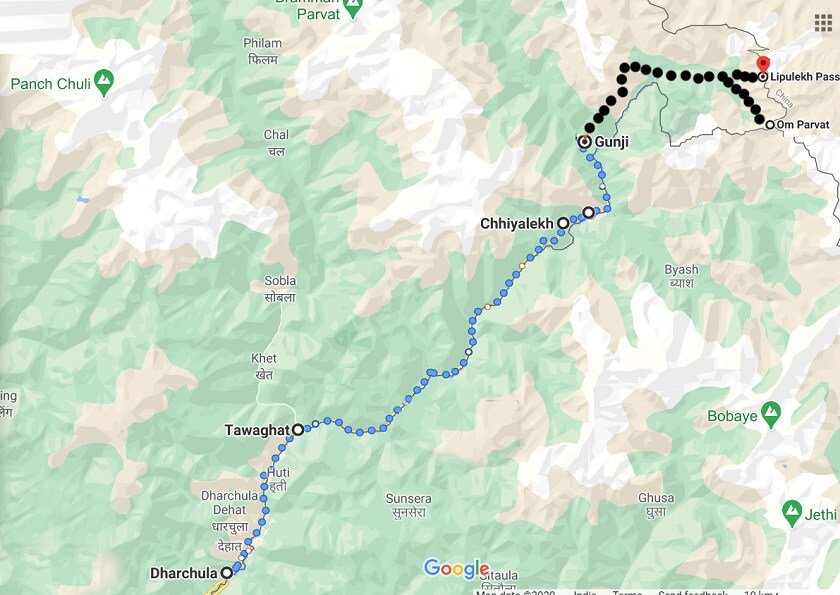
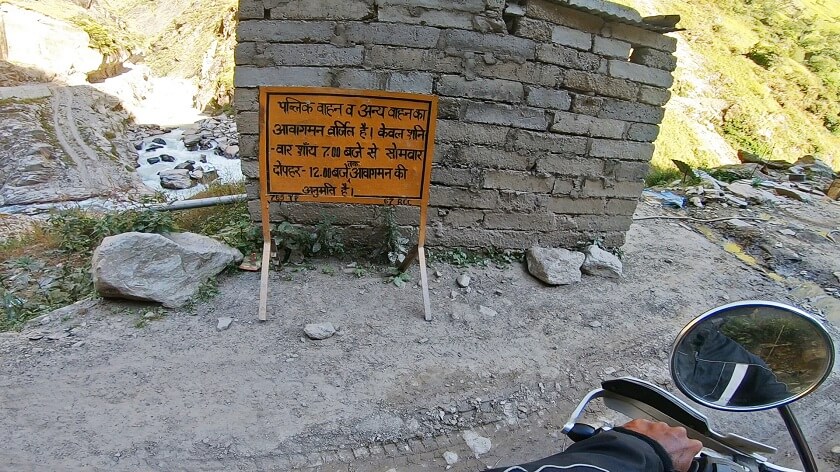

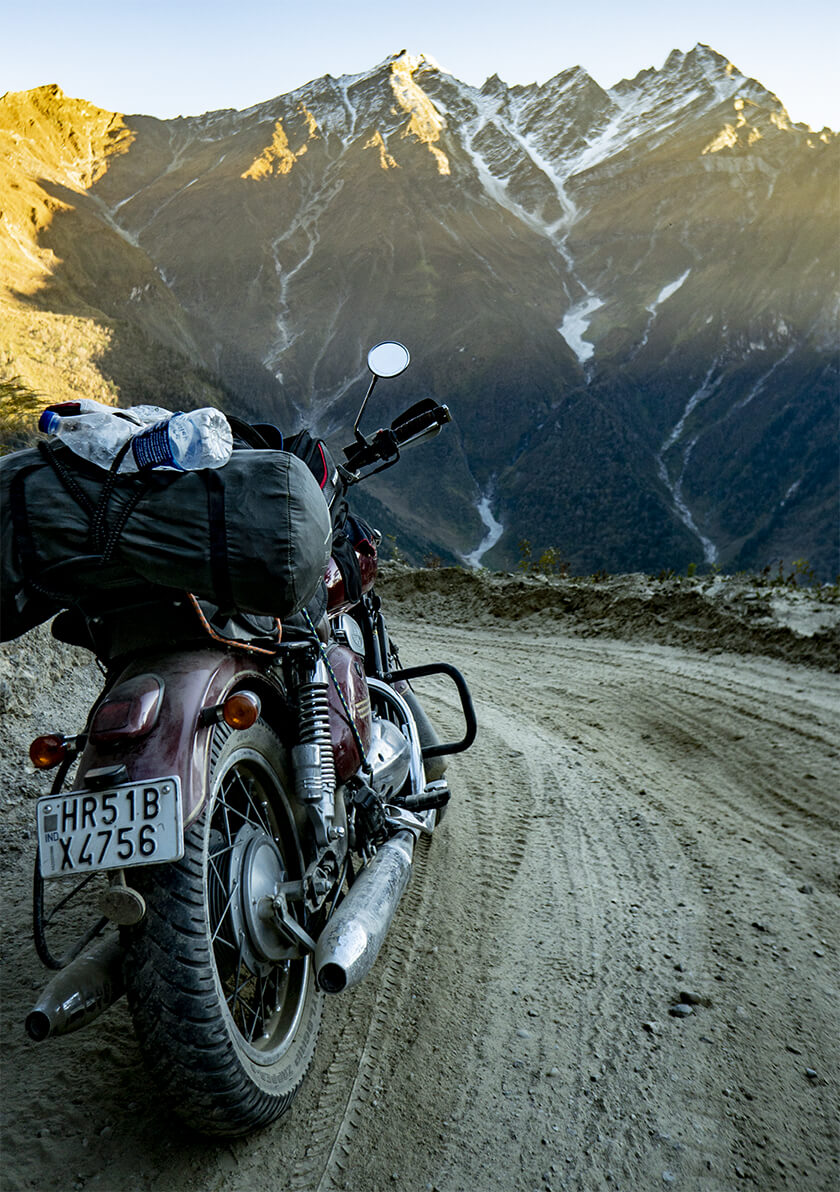
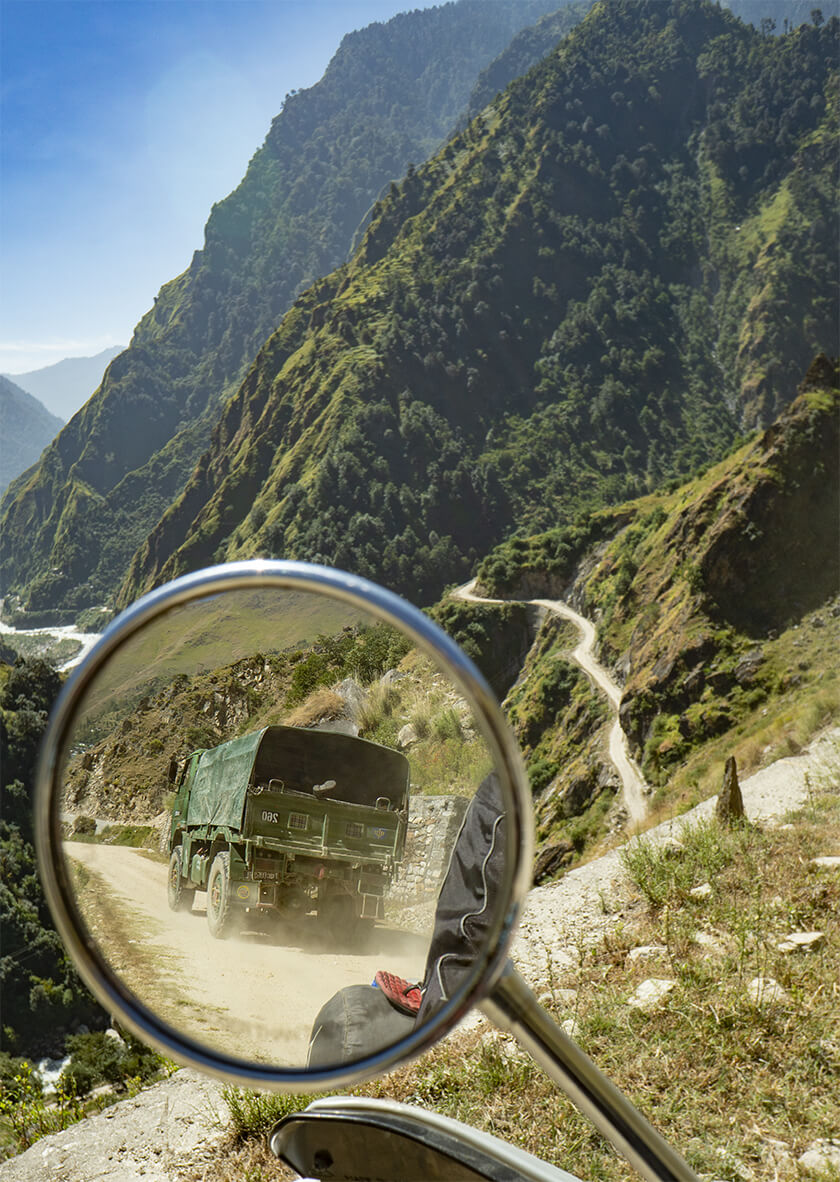
Hello Dev, Really lovely Blog and good description of trail.
Need to know, apart from the ILP, do we need any other tests (health, etc) needed just for a Road Trip? We are planning to travel during early December 2023.
This is an awesome resource! I’d love to come and ride this road on a bicycle. Do you think foreigners can get access to travel on this road? I’m Australian.
can do. You need to apply for an ILP.
Hi Dev
Really impressed with your writeup for the Lipulekh pass and Darma valley ride. I was planning the same in Oct 2022 and just stumbled across your link and now I dont need to search anywhere else. You have given all info to the point.
Thanks for the efforts taken and hope to see you on the road someday.
Cheerz
Zen
Hi, this is Sandhya, a really gud info, and if you could pls update the road condition and permissions which are required before to move on about the Kailash yatra would be a grt help.
Hope to c many more interesting and adventurous trips.
Gud luck
Is i20 is safe for this route?
certainly not bro
I did the other route twice – Tawaghat to Panchachuli. I cruised on my Himalayan – with a pillion on board for the most part. On the way down it had been raining three days prior and it rained for another 4 days after I reached Dharchula. I crossed waist-deep water while going downhill.
On my first attempt, a friend accompanying me did the route on a Pulsar 150 till Dar. From Dar to Dantu and beyond, we went on a single Himalayan, sharing riding duties.
So, it has nothing to do with the bike and everything to do with the skill of the rider. I crossed sharp hairpin bends where Dort had turned into 2-3 feet deep slush and muck. If you know how to do it right, an ADV will always be superior to a road-cruiser on this terrain.
And if it is dry dirt, you could do it on a Hyundai Santro 2002 model – I saw one at Dugtu.
You say … “new Kailash Mansarovar road remains open for tourists for only 17 hours in a week — between 7 PM Saturday to 12 PM Sunday” but the sign board in the picture above this text says ” … 12 PM Monday” (in hindi). Which makes it a 41 hour window … right?
lol. I have always been bad in mathematics. let me calculate again and correct. Big thanks, mate!